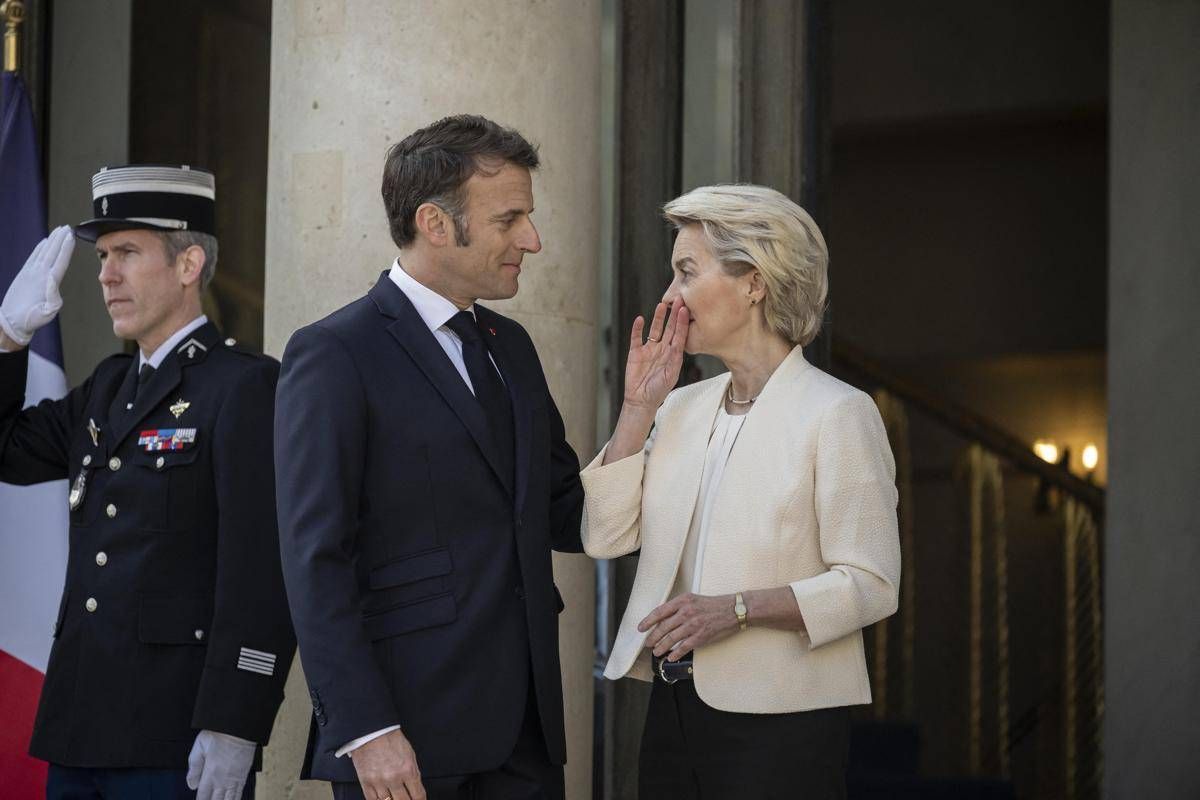
EU evaluates anti-coercion ‘bazooka’ to respond to US duties
-


Attacco Usa in Nigeria contro l’Isis, Trump: “Risposta al massacro di cristiani” VIDEO
-


Frana a Cormons: disperso un giovane e un’anziana sotto le macerie VIDEO
-


Tifone Fung-Wong colpisce le Filippine: un milione di evacuati VIDEO LIVE
-


Cargo Ups precipita in Kentucky: sette morti e diversi feriti VIDEO
Brussels evaluates the use of the Aci tool to defend the Union’s economic autonomy from the Trump administration’s imposed tariffs. What it is and how it works
The European Union is preparing to respond to the new trade war launched by the Trump administration, which has imposed a series of punitive tariffs. Among the instruments on the table is the Anti-Coercion Instrument (ACI), in force since December 2023 but never activated so far. Nicknamed the ‘bazooka’ because of its potential impact, the instrument aims to counter attempts of economic coercion by third countries intending to influence the political decisions of the EU or its member states.
What is the anti-coercion instrument
According to the European regulation, the ACI can be applied when a non-EU country attempts to interfere with European sovereignty by using trade pressure. Forms of coercion include discriminatory tariffs, government-sponsored boycotts, customs restrictions, and delays or refusals of authorisations.
The approach is structured: it starts with a phase of dialogue with the responsible country, followed – if no agreement is reached – by temporary and proportionate measures, which can affect sectors such as goods, services, public procurement, investments, intellectual property and health or environmental regulations.
A structured and shared decision-making process
The mechanism provides for the European Commission to propose the activation of the instrument and for the EU Council to verify whether there is a case for coercion. Companies and stakeholders can contribute by reporting cases and suggesting countermeasures in a confidential context.
The process foresees indicative timeframes
4 months for the Commission’s initial analysis
8-10 weeks for the Council decision
6 months for the evaluation of measures
The involvement of economic actors is ensured throughout the process, with the aim of maintaining efficiency and predictability.
Clash between member states: Meloni against the Franco-German line
According to a report in the Financial Times, Council President Giorgia Meloni is opposed to the Franco-German proposal to use the CAI against the US technology sector, which is heavily biased in favour of the US. In support of Berlin and Paris, Brussels and Madrid have already lined up, but Italy – together with Romania, Greece and Hungary – could form a blocking minority, making its position decisive.
Origin of the instrument and international compatibility
The CAI is not designed to target any particular country. It is compatible with international law and does not replace the WTO dispute settlement system, which is currently paralysed due to the US failure to appoint a judge.
The mechanism also provides for the possibility of collaboration with international partners, as envisaged by the G7 platform against economic coercion, launched in Hiroshima in 2023, in which Washington also participates.
The creation of the instrument was accelerated by the crisis between China and Lithuania in 2021, which followed the opening of a Taiwan representative office in Vilnius. Beijing’s reaction – with boycotts, sanctions and pressure on international companies – highlighted the need for a structured EU response to coercive practices.
THE LATEST NEWS
(Photo: © AndKronos)
-

 Tempo Libero2 giorni ago
Tempo Libero2 giorni agoArrivo del 2026 nel mondo: chi festeggia per primo il Capodanno
-

 World14 ore ago
World14 ore agoIncendio distrugge la chiesa di Vondelkerk ad Amsterdam
-

 Primo Piano2 giorni ago
Primo Piano2 giorni agoIsolamento di Odessa, la nuova strategia della Russia nella guerra in Ucraina
-

 Spettacolo2 giorni ago
Spettacolo2 giorni agoCapodanno in piazza in Italia: concerti ed eventi per salutare l’arrivo del 2026











